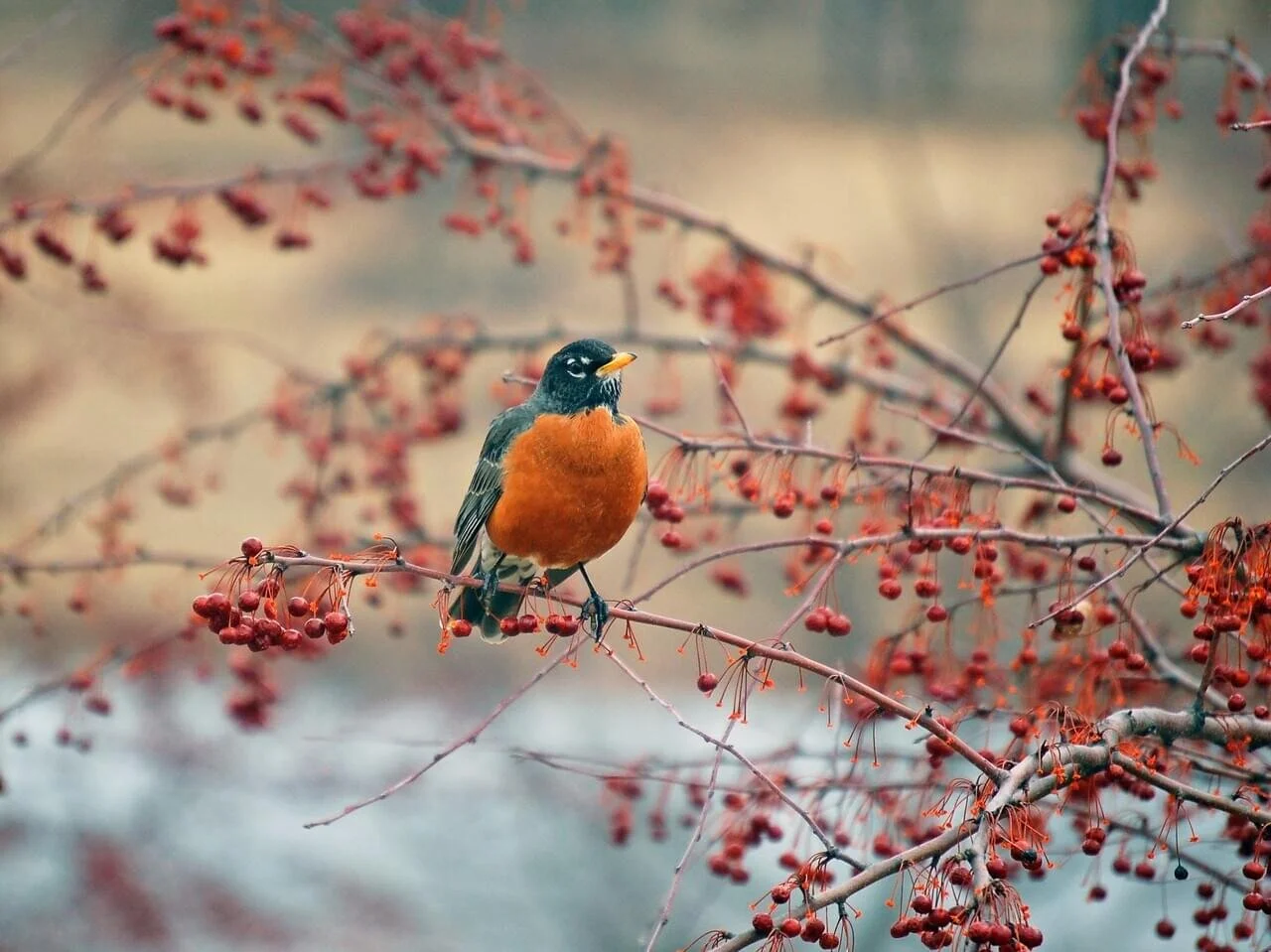Robins (Turdus migratorius)
by Lynne Flaccus
Many of us look to robins as an indicator of the unfolding spring. Their larger flocks moving over lawns and fields must surely mean the ground is thawed and flowers will be blooming? The male’s lovely song from treetops is a welcome concert after the chill and darkness of winter.
American robins are members of the thrush family (Turdidae) along with bluebirds, hermit and wood thrushes, and the veery. Members of this family tend to feed on the ground or in low shrubs and trees, feeding on insects, other invertebrates, and fruit. While we may notice robins mostly when they are cruising our lawns for earthworms, their diet is quite varied and they rely heavily on fruits throughout the year.
While we welcome them to our lawns each spring, robins live, feed, and nest in wooded areas far from urban landscapes as well. You may find them at higher elevations in the mountains, and in large tracts of northern forest areas where no lawns are found.
Robins are thought of as migratory, and indeed most do migrate, but each year there are flocks that remain in their summer range throughout the colder months. You may not see them kicking through snow in search of worms, but flocks may gather and move throughout the landscape in search of berries—crab apples, winterberry, various species of viburnum, hawthorn, sumac, and serviceberry. All these shrubs and many others retain their fruits late into the fall and winter. These late-lasting fruits may also have the benefit of housing dormant insects, providing many birds with an extra boost of protein.
One of my favorite spring observations is watching larger flocks of robins gather in my field in search of food. They move in flocks, stopping en route to their nesting territories, while some stay behind to nest in local habitats. It’s fun to watch their patterns of movement as they search for worms, sometimes even chasing each other to steal from a neighbor robin who had better luck finding the worm.
One spring I watched 20 or so robins in my field kicking up grass and feeding on worms. All at once they stopped moving—frozen in place for 10 minutes. Not a one moved a feather. Trying to figure out why they had stopped feeding, I thought at first that maybe they were just enjoying the warming sun. Though why all at once? It was not long before I realized that a sharp-shinned hawk had moved in and was sitting in a clump of shrubs nearby. Not a single robin moved to attract attention to itself and become a snack for this beautiful raptor! Eventually the hawk moved on, and the robins continued feeding—as if suddenly someone pushed a start button. Hawks depend on surprise when hunting and clearly no robins were surprised by this one’s presence!
Soon, if not already, the local robins will begin their nest building in a sheltered shrub or tree, or under your eaves. The female will lay three to six blue eggs and after roughly 14 days, the eggs will hatch. In less than two weeks the young will fledge, and go on to learn the skills needed to find their own food. It won’t be too long before the adult pair lays another clutch if all goes well.
Enjoy their antics and lovely morning chorus while you can, and perhaps plant a fruiting shrub this summer so you might enjoy the bright reddish belly of a robin during some future snowstorm.
Banner image and above: Robin (Turdus migratorius). Photo: Glenn Perricone, Cornell Lab of Ornithology


